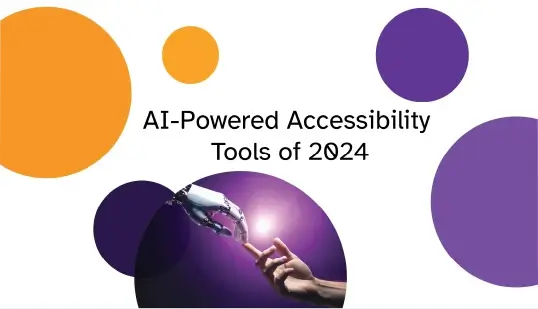Article
The Future of Accessibility: Innovations and Trends Beyond 2025
As digital experiences continue to evolve, accessibility is becoming an integral part of web design, software development, and business strategies. With regulations like the European Accessibility Act (EAA) setting new standards, companies are now prioritizing inclusive digital experiences. But what comes next? The future of accessibility is shaped by technological advancements, AI-driven solutions, and a growing recognition of digital inclusion as a fundamental right.
23 January 2025 • 3 min read
Related
Read me
AI and Machine Learning Revolutionizing Accessibility
Artificial Intelligence (AI) is playing a transformative role in making digital content more accessible. AI-powered screen readers, voice recognition tools, and automated captioning systems are improving at an unprecedented rate. Technologies like real-time image recognition help visually impaired users interpret visual content, while AI-driven chatbots assist individuals with cognitive disabilities by simplifying interactions.
Machine learning algorithms are also refining automatic accessibility audits. Instead of relying solely on manual checks, businesses can use AI to detect and fix accessibility barriers proactively. This shift not only speeds up compliance but also ensures continuous improvement.
Voice and Gesture-Based Navigation
Voice recognition technology has already changed the way people interact with digital devices, but its role in accessibility will expand even further. Advances in natural language processing will allow users to control websites, applications, and even smart home devices through conversational commands. Gesture-based interfaces, using cameras and motion sensors, will provide new ways for individuals with mobility impairments to interact with digital platforms effortlessly.
Virtual and Augmented Reality (VR & AR) for Inclusive Experiences
Virtual Reality (VR) and Augmented Reality (AR) are becoming more accessible, paving the way for immersive experiences tailored to diverse needs. VR environments are being adapted for individuals with disabilities, offering customizable navigation aids and assistive overlays. AR can enhance real-world interactions by providing real-time text-to-speech conversions or guiding users through physical spaces with augmented sign language interpretation.
Accessibility in the Metaverse
The rise of the Metaverse presents both challenges and opportunities for accessibility. As companies build virtual spaces, ensuring inclusivity from the outset is crucial. Developers must create environments where users with disabilities can navigate, communicate, and interact without barriers. This includes accessible avatars, text-to-speech features, and adaptable interfaces that cater to different sensory and mobility needs.
Inclusive Design Becoming the Standard
Beyond compliance, businesses are embracing inclusive design as a best practice. This means designing digital products that are usable by everyone, regardless of ability, from the start rather than making retroactive fixes. As accessibility becomes embedded in UX/UI design processes, companies will see improved user satisfaction, broader audience reach, and enhanced brand reputation.
Tags
To find the solution that is best suited for your needs


